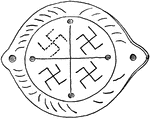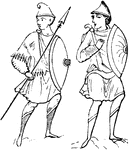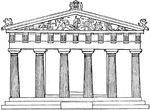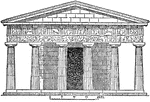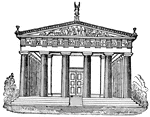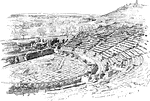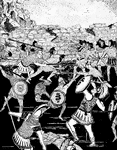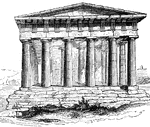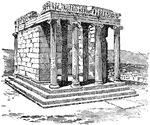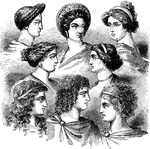The Ancient Greece ClipArt gallery offers 362 illustration of Greek history, events, and scenes of everyday life. For related images, please see Greek Mythology, Greek Architecture, Greek Ornament, Greek Coins, Greek Vases, and the Ancient Greek Musical Instruments ClipArt galleries.

Symposium
"Symposium, a drinking-party. The symposium must be distunguished from the deipnon, for though drinking…
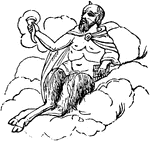
Syrinx
"Syrinx, the Pan's pipe, or Pandean pipe, was the appropriate musical instrument of the Arcadian and…
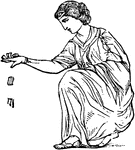
Talus
"Talus. The huckle-bones of sheep and goats were used to play with from the earliest times, principally…
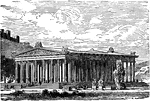
Temple of Diana at Ephesus
"The temple of Diana was the chief glory of the city. The style was Grecian. The length of the ground-plan…

The Isthmian Games
One of the Panhellenic Games of Ancient Greece. They were held both the year before and the year after…

The Parthenon
The Parthenon is a temple of the Greek Goddess Athena, who was considered as the protector of the city…

Theocritus
"The fame of Theocritus, the prince of bucolic poetry, depends on his faithful pictures of natural scenery…

Thrones
"Thrones, a throne, is a Greek word, for which the proper Latin term is Solium. This did not differ…
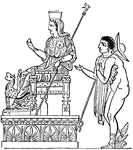
Thrones
"The following wood-cut from a fictile vase in the Museo Borbonico at Naples, represents Juno seated…
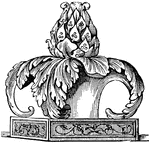
Thyrsus
"Thyrsus, a pole carried by Bacchus, and by Satyrs, Maenades, and others who engaged in Bacchic festivities…
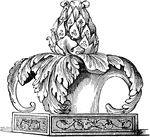
Head of a thyrsus
"Shows the head of a thyrsus composed of the leaves and berries of the ivy, and surrounded by acanthus…
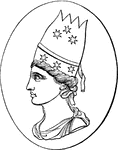
Tiara
"Tiara or Tiaras, a hat with a large high crown. This was the head-dress which characterized the north-western…
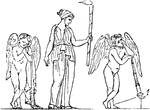
Torches
"On ancient monuments, the torch appears to be formed of wooden staves or twigs, either bound by a rope…
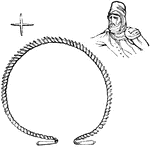
Torques
"An ornament or kind of chain, of gold, twisted spiraly, and bent in a circular form, which was worn…
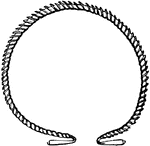
Torques
"Toques or torquis, an ornament of gold, twisted spirally and bent into a circular form, which was worn…

Tower of the Winds
The Tower of the Winds, also called horologion (timepiece), is an octagonal Pentelic marble clocktower…

Mobile tower
"They who are within this machine obtain first a view of the place from their high position, and then,…
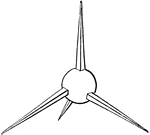
Tribulus
"Tribulus, a caltrop, also called murex. When a place was beset with troops, the one party endeavoured…

Greek tripod
"When tripods are said to be given in a present, or as prizes, vases or large bowls supported on three…
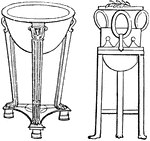
Tripos
"Tripos, a tripod, i.e. any utensil or article of furniture supported upon three feet. More especially,…

Trochus
"Trochus, a hoop. The Greek boys used to exercise themselves, like ours, with trundling a hoop. It was…
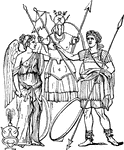
Tropaeum
"Tropaeum, a trophy, a sign and memorial of victory, which was erected on the field of battle where…
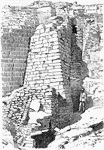
Excavations at Troy
"The great northeast tower of the sixth city. The stairs to the right date from the eighth city."—Webster,…
Trua
"Trua, Trulla, to perforate; a large and flat spoon or ladle, pierced with holes; a trowel. The following…
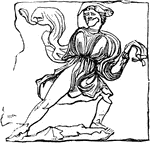
Tunica
"Tunica, an under-garment. Greek. The chiton was the only kind of under-garment, worn by the Greeks.…

Tunica
"Tunica, an under-garment. Greek. The chiton was the only kind of under-garment, worn by the Greeks.…
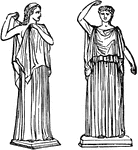
Tunica
"Tunica, an under-garment. Greek. The chiton was the only kind of under-garment, worn by the Greeks.…

Turibulum
"Turibulum, a censer. The Greeks and Romans, when they sacrificed, commonly took a little frankincense…

Umbraculum
"Umbraculum, Umbella, a parasol, was used by Greek and Roman ladies as a protection against the sun.…
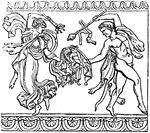
Vannus
"Vannus, A winnowing van, a bread basket, into which the corn mixed with chaff was received after trashing,…
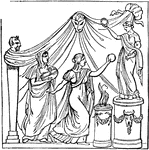
Velum
"Velum, a curtain. Curtains were used in private houses as coverings over doors, or they served in the…

The Victors of Salamis by Fernand Cormon
Illustration of a painting of the ancient Greeks returning victorious from the Battle of Salamis against…

Falx vinitoria
"Represents the falx vinitoria, or pruning-knife for vines, to which the ensis falcatus…

Women with necklaces
"It is a very common error to translate monile baccatum, "a pearl necklace". The ornament of…
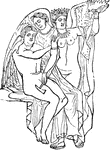
Women with necklaces
"It is a very common error to translate monile baccatum, "a pearl necklace". The ornament of…

Wrestling
"The Olympic games were of greater efficacy than the Amphictyonic Council in promoting the spirit of…
